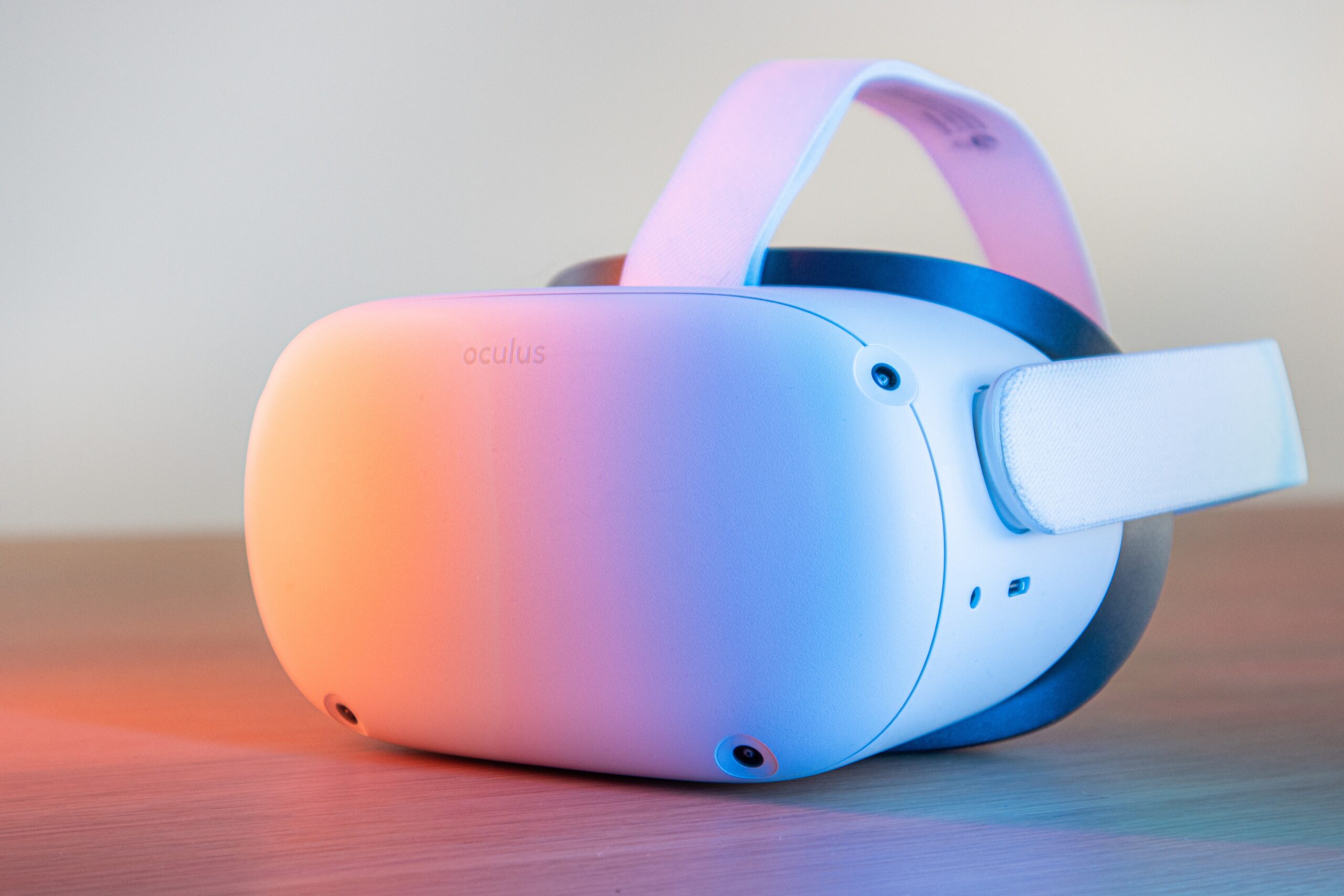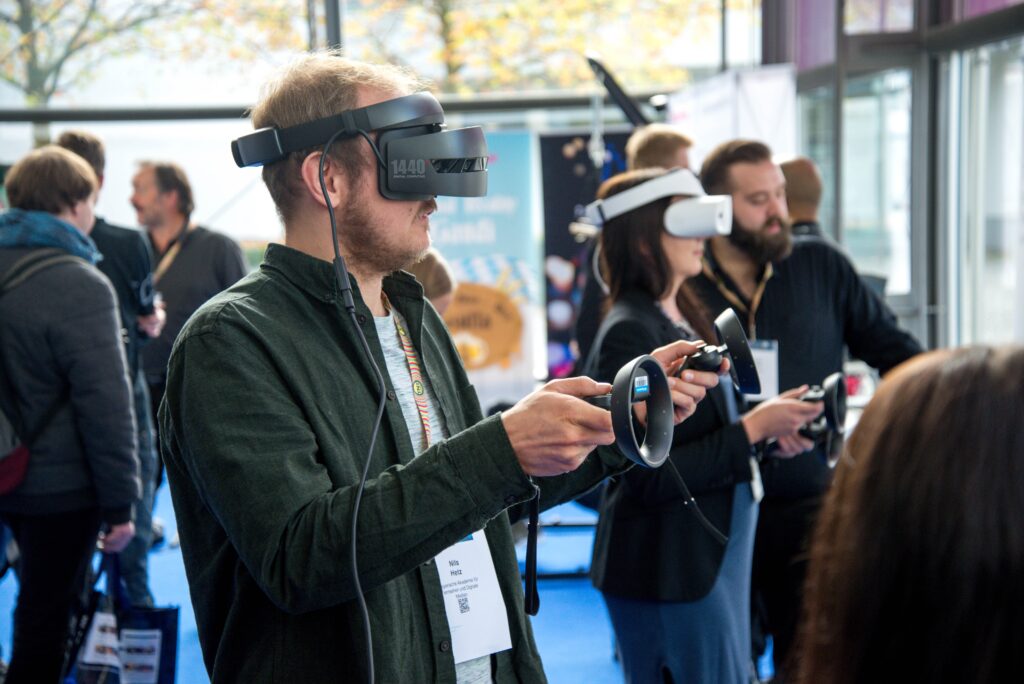
It’s the 21st century, and technology is constantly evolving. One of the most rapidly growing industries is virtual reality, or VR. For years gaming has been a way to bring people together in the form of entertainment or even competition. But, the introduction of virtual reality (VR) technology is revolutionising the industry and offering players an incomparable experience that breaks all boundaries on what’s possible when it comes to interactive gameplay. Human Interface Devices, or HIDs, are a crucial part of VR gaming. We will discuss what these devices are and how they work in order to create a truly immersive experience for gamers.
Virtual reality (VR) is an interactive human interface that uses technology to create digital worlds and vivid gaming experiences. With VR, gamers can feel as if they are truly transported into distant lands or alternate realities. Thanks to advanced human interface devices, players can not only gaze at the virtual environment in awe but physically interact with it. Simply by picking up a controller and taking command, users can immerse themselves further in the gamescapes, enabling them to manipulate objects and explore the digital space with complete freedom. This level of interactive gaming has become even more welcome and transformative with advances in technology that allow developers to expand VR capabilities even further. No longer merely a spectator, users now have the ability to craft their own environments . Revel in the excitement of virtual reality gaming!

Virtual reality technology has risen to the forefront of entertainment and tech in recent years. It offers an RPG-like experience that immerses users completely in their virtual environment. There are many different types of VR technologies on the market, from mobile phone headsets to standalone models with multiple sensors. Most mobile phone headsets use your smartphone as the engine to create an immersive, stereoscopic 3D experience by connecting it to a headset and controller. Standalone devices are equipped with multiple sensors and cameras that can provide positional tracking within a room or even support 6DOF VR experiences. Depending on your needs, there is a specific type of VR device available for everyone – from casual gamers to professionals creating complex applications.
Virtual Reality (VR) technology has made incredible advancements in recent years, however it remains an expensive hobby limited to gamers with deep pockets. In order to stay on the cutting edge of gaming technology, many players have incurred considerable costs for the necessary hardware and software. This has created a rugged landscape in the gaming industry – while testing out new VR experiences is an exciting prospect, the cost of these experiences may not be viable options for some gamers. To complicate matters further, developers are being forced to weigh the financial risk of creating games for VR platforms against potentially low returns if their titles aren’t accessible to enough players. As a result, some game studios have opted not to pursue immersive gaming through high-end virtual spaces which wildly limits the potential of modern entertainment technology. As companies continue innovating in order to quickly shrink costs associated with these immersive experiences, we may yet see a resurgence of interest in VR gaming despite its current drawbacks.
With the emergence of virtual reality (VR) gaming, developers and players alike are finding new ways to experience a heightened immersion in play. Beyond the obvious appeal of game visuals, there are a number of benefits that come with playing in a virtual environment. For starters, players can use movement as an input device, often offering an alternative way of solving puzzles or completing tasks. This type of tactile exploration is much more engaging than simply mashing buttons on a handheld controller. Additionally, since all the action is taking place on a simulated field in an alternate reality, VR helps to create experiences that can otherwise be difficult for traditional games to replicate. From scuba diving to exploring wild jungles and riding on the back of dragons, VR brings comfort zoning and escapism to a whole new level.

Virtual Reality (VR) is quickly becoming a tool that allows gamers to become more deeply immersed in their gaming experience. By utilising headsets and other immersive technologies, the game’s environment puts a player into the story and characters, making it all seem far more real than ever before. With this heightened engagement comes an increase in players’ reactions; whether it be awe when playing a horror game or joy when venturing through new landscapes, VR allows users to feel like they are truly taking part in something special. In recent years, we have seen an influx of developers looking to capitalise on the heightened player engagement associated with VR technology, creating games specifically tailored for this platform that focus on enhancing the user’s overall experience. These groundbreaking games are just beginning to hit the market, ensuring long-term potential for this increasingly popular platform over time.
As virtual reality (VR) gaming continues to become increasingly popular, it is important to consider all potential risks and challenges associated with this technology. There are a variety of potential issues stemming from the immersive nature of VR gaming that players should be aware of; this includes symptoms commonly known as “VR sickness”. VR sickness is described as one who utilises VR systems feeling nauseous or dizzy after prolonged usage due to the conflicting information being projected between the body’s physical senses and what the game projects through visuals and sound. Other possible complications include eye strain, headaches, 1 seizures, and other physical discomforts which occur due to extended use of a headset. The potentially hazardous effects on physical wellbeing must be seriously taken into consideration when using any virtual reality system, especially with younger players.
All in all, virtual reality technology is set to revolutionise the gaming industry. Of course, there are still some challenges yet to be overcome in terms of cost and risks, but with new innovations already on the horizon it’s clear that these changes will come sooner rather than later. From giving players an immersive experience to significantly increasing engagement and retention, virtual reality is a powerful tool for game developers to use. The improvements from VR technology can not only help create more enjoyable experiences for players – they can also open up new avenues for developers to take when designing their games.
Having explored the different types of virtual reality technology available today, discussed the cost implications on the industry, explored the benefits it brings and looked at potential risks involved, it’s safe to say we have a long and thrilling road ahead when it comes to VR gaming. Have you tried virtual reality? Let us know your thoughts about it!